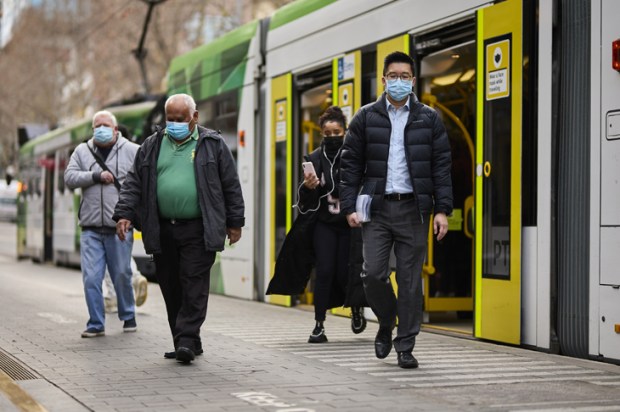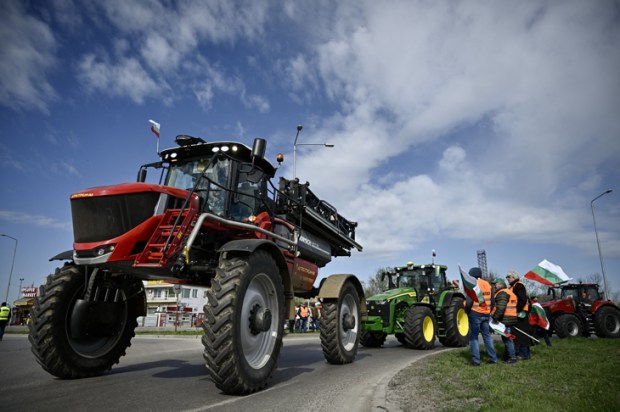The world was initially shocked by the brutality of China’s lockdown to deal with the outbreak of a novel coronavirus in Wuhan. When the virus quickly encircled the globe, other countries realised their health systems could be overwhelmed unless they ‘flattened the curve’ to slow the surging infections. China’s response was reinterpreted as brutally effective – ‘tough love’ – and worthy of emulation, even though its claimed success based on official figures is implausible. Covid cases and deaths surged in Europe in autumn, seemingly vindicating sceptics from spring who said lockdowns would simply postpone the spread of the virus. But lockdown zealots drew the opposite conclusion. Ignoring statements from governments and health experts themselves about the limited duration of the first-wave lockdowns, they insisted the mistake was to lift restrictions over the summer.
ABS figures show 169,000 people died in Australia in 2019 (median age 82), including 4,124 from flu and pneumonia (89). The expected deaths from all causes last year would have been around 172,000. The 909 Covid-related deaths – 0.5% of the total – makes it the 26th killer of Australians last year. About 90 had likely died from the feared disease. As for the rest, we don’t know if the vast majority or a small fraction died of it or with it. According to the UK protocol, for example, anyone struck by a bus within 28 days of a positive test is a Covid death.
Globally, 1.8mn Covid-related deaths accounted for under three per cent of the total and it was only the sixth-biggest killer in 2020. Of 22,638,084 active cases worldwide on 6 January, only 0.5 per cent were ‘serious or critical’ and 99.5 per cent were ‘mild’. In England, 2.5 times as many under-sixties died in road accidents in 2019 (955) as with Covid with no underlying condition in 2020 (388 until 23 December). How many young people have had their careers destroyed by lockdowns, are suffering serious mental health problems or have committed suicide? Almost four times as many – 3,318 – died from ‘intentional self-harm’ in Australia in 2019 as from Covid in 2020. Four experts from Harvard, Oxford and Stanford universities operate Collateral Global as an online repository for research into the worldwide collateral effects of the Covid-19 lockdowns.
Yet the pandemic-porn addicted media coverage, in Australia and the world, of this ‘once-in-a-century’ health emergency would imply that more people died of Covid last year than all other causes combined. The discrepancy between the death scenarios of mathematical models and actual data is seen, not as proof of how wildly over the top the models are, but of how effectively governments and health experts have dealt with the threat by locking down anything that moves and even some things that don’t. Yet we have the chutzpah to mock and ridicule believers in astrology who use similarly self-validating logic for a few correct ‘predictions’ no matter how vague, and self-rationalising logic for the more frequent failed predictions (e.g. didn’t pray often enough or to the right god).
As we look back at the year – in which decades-long settled science was displaced by voodoo epidemiology, governments acted like panicked herds and people parked their critical reasoning faculty in the basement – it’s clear that Covid-19 patterns vary more by geography, demography and seasons than harshness and timing of lockdowns. Like other respiratory illnesses, infections and deaths subsided over the summer and surged again in autumn. Meanwhile lockdown fanatics have stubbornly ignored the incredibly age-segregated nature of Covid deaths and thus failed to devise a strategy to protect the most vulnerable with only minimal restrictions for the low-cum-negligible risk cohorts.
Europe accounts for three times as many Covid-19 deaths as its share of world population, North America six times and South America 2.4 times. By contrast Oceania has only one-tenth, Africa one-fifth and Asia one-third their respective population shares. Australia and New Zealand are right in the East Asian/Oceania range. This hasn’t of course stopped leaders and experts from claiming credit and the largely credulous public from serenading them. Isn’t it curious that Sweden should be the one country to escape the Stockholm syndrome?
While correlation is not proof of causality, absence of any correlation does prove a complete lack of causality. Last month a regression analysis found that variance in lockdowns between the 50 US states has zero explanatory utility for explaining variance in deaths per million people (DPM). The most befitting headline of 2020 was from Politico on 23 December: ‘Locked-down California runs out of reasons for surprising surge’. Despite ‘some of the toughest restrictions’, California had become ‘one of the nation’s worst epicentres for the disease, setting new records for cases, hospitalizations and deaths’. This ‘has confounded leaders and health experts’.
Only because the experts still refuse to accept that the ‘virus gonna virus’ and subscribe to the lockdown cult. As Roger Koops says: ‘Stopping humans from being human will not stop the virus from being a virus!’ Heaven forbid they should admit the whole approach is flawed and the ‘focussed protection’ advocated by the Great Barrington Declaration, of shielding those most at risk and encouraging the rest to get on with their lives with sensible individual precautions, makes more sense. To put things in perspective, in San Francisco, 621 people died of overdoses compared to 173 who died with Covid-19.
Against the world average of 237 deaths per million (DPM) on 3 January, the worst-performing countries in Europe were, in ascending order,Spain, UK, Italy, Belgium — all hard lockdown countries — which had between 1,087-1,691 DPM. By contrast, soft lockdown Finland and Norway had fewer restrictions than even Sweden after May and had 101 and 80 DPM. Sweden is the only example I am aware of where we can assess actual data against mortality predicted by the notorious models. Instead of the alarmist warnings of 96,000 Covid deaths by July, there were under 6,000. Thus, Neil Ferguson’s model catastrophically failed the one clear natural experiment test of its predictive power. Undeterred, Professor ‘Lockdown/Pantsdown’s’ team predicted catastrophic deaths by mid-summer for US states that reopened and their forecasts proved just as catastrophically wrong again. At the other end, responding to Nicholas Kristof of the New York Times (20 March), Ferguson predicted a best-case scenario of 1.1 million US deaths (against his model’s worst-case estimate of 2.2 million deaths). He was also sceptical of Japan (30 DPM) and South Korea (21 DPM) being able to maintain their success for 18 months. That’s how utterly useless those silly models have proven to be but governments remain in thrall to the snake oil modelling experts. As someone said, leave models on the catwalk.
Got something to add? Join the discussion and comment below.
Get 10 issues for just $10
Subscribe to The Spectator Australia today for the next 10 magazine issues, plus full online access, for just $10.
You might disagree with half of it, but you’ll enjoy reading all of it. Try your first month for free, then just $2 a week for the remainder of your first year.














Comments
Don't miss out
Join the conversation with other Spectator Australia readers. Subscribe to leave a comment.
SUBSCRIBEAlready a subscriber? Log in